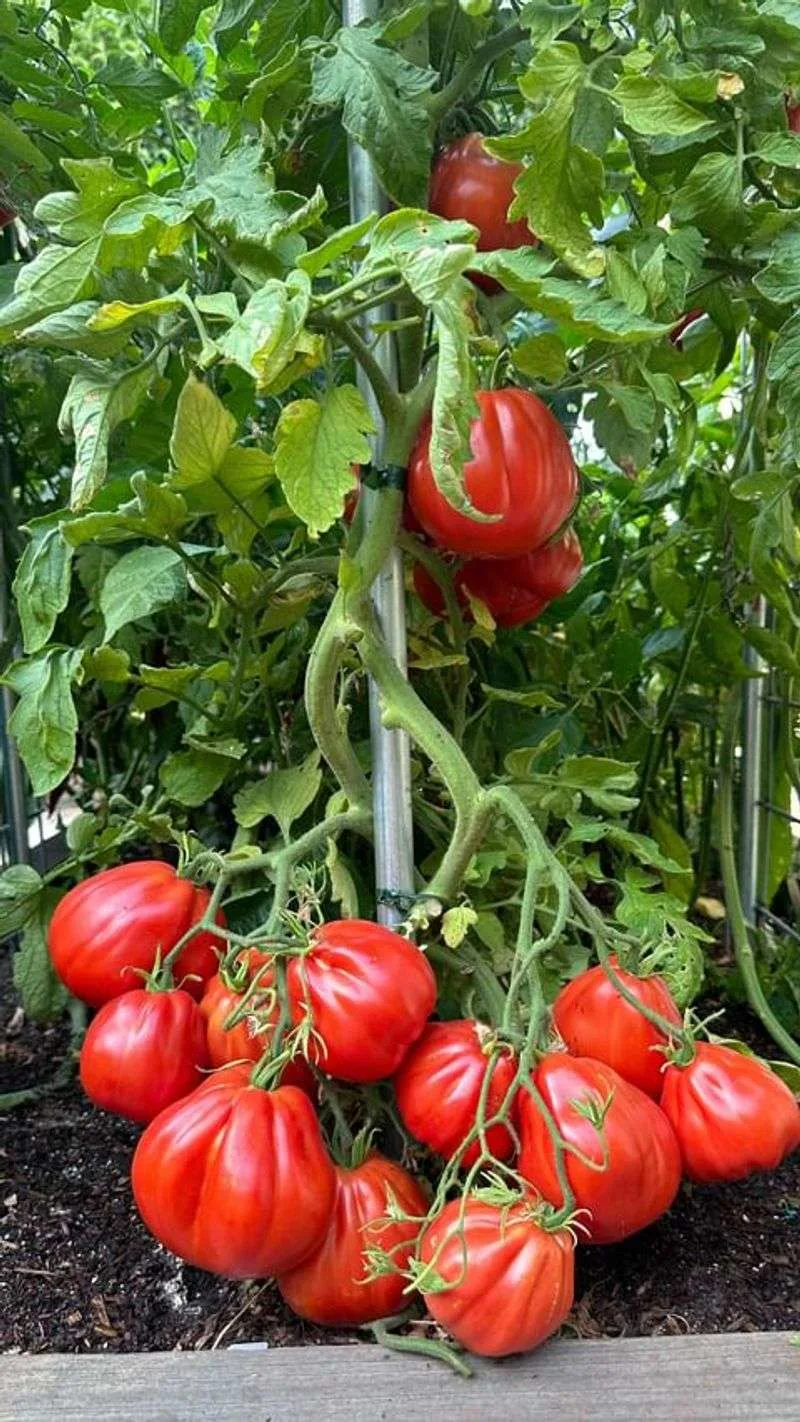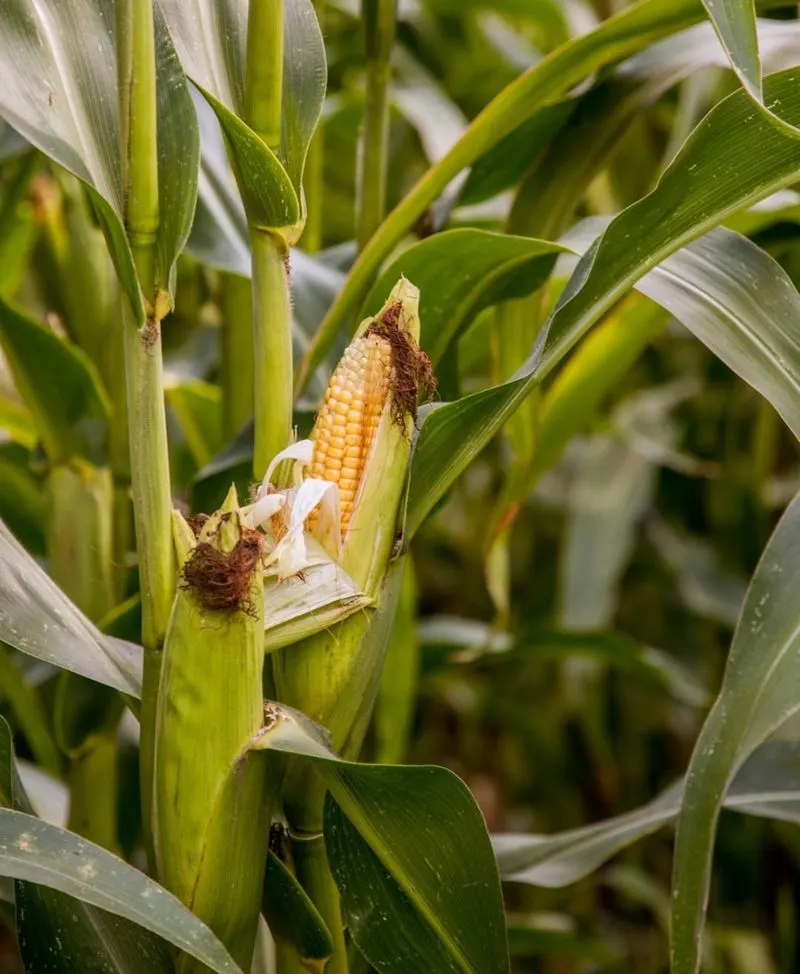Companion planting can be a game-changer for gardeners, promoting healthy growth and natural pest control. However, not all plants are compatible neighbors.
Some combinations can lead to competition for nutrients, stunted growth, or even attract harmful pests. Knowing which plants to keep apart is just as important as knowing which ones work well together.
In this guide, we’ll uncover 10 plant pairings you should absolutely avoid in your raised bed garden. By steering clear of these combinations, you’ll set your garden up for success and ensure each plant thrives in its space.
Tomatoes and Potatoes

Planting tomatoes alongside potatoes seems intuitive as they share culinary uses. However, this pairing invites trouble. Both are prone to blight, a disease devastating to both crops. Sharing the same space increases the risk of rapid blight transmission.
Potatoes compete fiercely for nutrients, often overshadowing tomatoes in the battle for vital resources. This competition can stunt tomato growth significantly.
Instead, consider separating these two and improving soil health. Creating distinct zones for each helps in managing diseases and promotes healthier yields. Gardeners can thus enjoy abundant harvests of both tomatoes and potatoes without the hassle.
Carrots and Dill

Mixing carrots with dill might appear harmless to the untrained eye. Yet, dill produces compounds that can stunt carrot growth. Carrot roots become distorted and lose their characteristic sweetness, impacting yield quality.
Dill’s height and spread also overshadow young carrot shoots, depriving them of sunlight. This mismatch leads to uneven growth and can diminish your overall harvest.
Opt for planting dill at the garden’s edge, away from carrots. This strategic separation guards your carrots’ development, ensuring they grow straight and sweet. A little garden planning goes a long way in maximizing both plants’ potential.
Beans and Onions

Combining beans with onions might not seem problematic, yet it’s a classic no-go. Onions release sulfur compounds that can inhibit bean growth and vitality.
Beans, known for their nitrogen-fixing ability, fail to thrive when onions encroach on their space. This results in stunted plants and reduced bean production.
For optimal results, consider separating them with a buffer zone of other plants. This ensures that the beans’ nitrogen-fixing powers remain unhindered, while onions can develop without disrupting their neighboring counterparts. Strategic planting enhances garden productivity significantly.
Cabbage and Grapes

Pairing cabbage with grapes is a classic mistake in garden planning. Cabbage attracts pests like cabbage worms and aphids, which can easily transfer to grapevines.
Grapes, though hardy, struggle when competing with cabbage for nutrients and soil moisture. This can lead to weaker grapevines and poor fruiting.
To avoid this, maintain a healthy distance between these two. Creating distinct areas ensures that each plant receives adequate attention and resources. Your cabbages remain pest-free, and grapes can flourish into robust vines laden with fruit. Thoughtful planning is essential for a fruitful garden.
Peppers and Fennel

Fennel’s dominating nature doesn’t blend well with peppers. It releases allelopathic chemicals that can hinder pepper growth, leading to stunted plants and reduced fruit production.
Peppers need ample sunlight and space to develop. When fennel overshadows them, the result is a compromised harvest.
Instead of pairing these, position fennel in a separate plot or container. This allows peppers to thrive unhindered, ensuring a healthy crop. Such strategic companion planting can vastly improve garden success, providing both plants the right conditions to excel.
Corn and Tomatoes

The idea of corn and tomatoes growing side by side brings visions of lush gardens. However, these plants are not compatible.
Corn’s tall stalks can overshadow tomato plants, depriving them of necessary sunlight. Meanwhile, tomatoes are prone to pests that can easily transfer to corn.
Avoid this by situating them apart. This ensures both receive ample sunlight and reduces pest sharing. Thoughtful placement helps each plant develop to its full potential, resulting in more robust yields. This example demonstrates how strategic garden planning is key to managing plant health effectively.
Radishes and Hyssop

Planting radishes with hyssop may seem benign, but it can lead to issues. Hyssop is known to stunt the growth of radishes, causing them to bolt early and miss their prime harvesting window.
This overlooked misstep affects both the yield and the quality of radishes. Meanwhile, hyssop also struggles to thrive when overshadowed by the fast-growing radish leaves.
Consider planting these separately to allow each to flourish. By doing so, you can enjoy fresh radishes without the risk of premature bolting, and aromatic hyssop that reaches its full potential. Balance is crucial in successful companion planting.
Strawberries and Brassicas

Strawberries and brassicas make an appealing visual pair, yet they don’t complement each other well. Brassicas, such as broccoli and cabbage, can outcompete strawberries for soil nutrients.
The dense leaf cover of brassicas can also shade strawberry plants, affecting fruit development and reducing berry sweetness.
For a thriving garden, consider planting strawberries in a separate area. This allows for proper sunlight exposure and nutrient uptake, ensuring sweet, abundant strawberries. Meanwhile, brassicas can grow strong without competition. This separation enhances both crops’ performance, making your garden more productive.
Sunflowers and Potatoes

Sunflowers, with their towering presence, may seem like the perfect backdrop for any garden. However, when planted with potatoes, they can cause problems.
The extensive root systems of sunflowers compete fiercely for nutrients and water, leaving potatoes with less than they need. This affects potato yield and quality.
Opt for planting sunflowers away from your potato patch. This prevents the competition for resources and allows each plant to thrive independently. Such mindful arrangements boost the health of your entire garden, ensuring both sunflowers and potatoes reach their potential.
Cucumbers and Sage

Cucumbers and sage may share a garden, but their needs differ significantly. Sage’s aromatic oils inhibit cucumber growth, leading to stunted vines and fewer fruits.
Cucumbers require consistent moisture and nutrients, conditions that sage’s presence can disrupt. This mismatch results in reduced cucumber yield.
To optimize growth, separate these plants. Cucumber vines flourish when given adequate space and conditions, while sage thrives in its own area, enhancing its aromatic properties. Strategic planting maximizes both plants’ growth potential, ensuring a more productive and harmonious garden environment.

